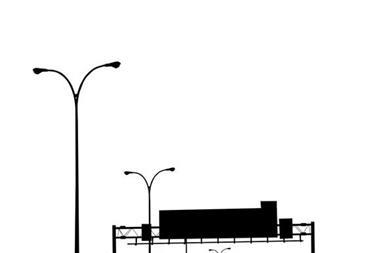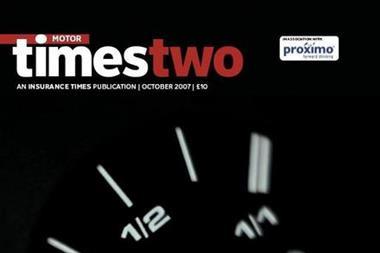As insurers draw on their reserves and claims surge upward, most are agreed that rates must rise, but will aggregators throw a spanner in the works? Caroline Jordan explains
Stupendously fierce competition has squeezed out much of the profit from the motor market. So much so, that finally, insurers are talking with some credibility of putting up rates.
Norwich Union, Highway and Fortis all say they have increased rates with further rises to come in 2008. Actuary EMB believes a clear correction is in the offing with rates rising overall by some 10% by the end of this year.
But don’t hold your breath since, at the same time, along comes Tesco Compare, yet another aggregator, claiming it could “save you money”.
About 25% of the insurers on the Tesco site are from the RBS stable, namely Privilege and Churchill. RBS is also the underwriter behind Virgin Money, Lloyds TSB and Nationwide – all of whom will also be featured.
The sniping from other aggregators has already begun, with some saying Tesco has gone for brand over choice.
But, although rate increases are happening, will insurers make them stick?
Certainly for many brokers, as insurers raise rates, quotes could become less competitive. And, all the while, the aggregators are snaffling up clients.
Andy Lee, chief executive of broker Outright, says: “The insurer rises are due, but the question is, how much will be transferred to the customer? My expectation is that consumers can expect motor premiums to go up, but they will be protected to some extent by brokers competing through aggregators.”
Brokers may seek to reduce their cut of commission, they may decide to pay an aggregator or they may pull out of motor altogether.
For insurers specialising in the broker market, conditions are, to say the least, challenging. Chris Hill, managing director of Highway, says: “We’re profitable but we can’t be complacent. We need to be strong in ancillary areas like motor trade, fleets, motorcycles and classic cars and work closely with brokers – those relationships have to be really strong.”
Although Highway is broker friendly, this market is no intermediary picnic, particularly for smaller brokers. No wonder they are focusing less on motor and more on commercial lines.
They are paid measly commissions and increasing numbers are looking to outsource their motor books.
The Only Group offers aggregator and broker facilities. Head of personal lines Ian Hall comments: “I’ll be pleased to see rates rise, and I think brokers should support this. Pricing on aggregators should allow comparisons, but the amount of competition has been destabilising. It’s time insurers showed some gumption.”
He says he is aware of one “big name” broker which is undercutting net rates by around 5% on motor just to win business.
“It’s not a wise strategy. The customers may think they are getting a cheap deal, but they are then bombarded with calls from the broker trying to cross-sell every other type of insurance to recoup its losses.”
But can brokers be blamed for trying to win business?
Roger Ball, commercial motor manager at Allianz, says: “In terms of commercial, brokers are saying they can obtain a client a cheaper quote, but not always on a scientific basis.”
He adds though that he is cheered the market is no longer softening and believes there will be sustained increases next year.
“The insurer rises are due, but the question is, how much will be transferred to the customer?
Andy Lee, Outright
The need for insurers to raise motor rates was revealed in depth this August by EMB. Senior consultant Paul Moorshead says insurers have been caught out subsiding their customers, through releasing reserves from household insurance. But, this sector has taken a caning as a result of the floods.
EMB’s annual motor report shows the motor market has been relying on reserves – in particular from household – to make a profit. In 2006, private car comprehensive premiums fell 2% year-on-year.
These show reserve releases hit a record level for the seventh year running, in both monetary and percentage terms. They amounted to an £821m cushion: equivalent to 10% of premium income overall, split 8% for personal and 14% for commercial motor.
The actuary says at slightly over 100%, the operating or combined ratios for 2005 and 2006 were respectable and better than the long-term average.
Without the releases, however, they would have been 108% and 111% respectively, which would have been unsustainable.
EMB senior consultant Paul Moorshead adds that the pool of reserves is now drying up and insurers must start underwriting for a real profit. “Insurance is too cheap,” he concludes.
The analysis shows that for every £100 motor insurers took in motor insurance premiums last year, they paid out £111 in claims and expenses, although investment income from premiums cut this figure to £106.
Moorshead says the only way motor rates can go is up.
Wendy Seago, Norwich Union’s director ‘ ‘ of underwriting for personal lines, says her company was first off the mark to raise rates in September 2006. “We had to take corrective action and I think we’ll continue to see increases, but competition will keep these stable.”
She says the market is tough. “Of course being a big brand helps, but there is not a lot of loyalty. Aggregators have had an impact on pushing rates down. As insurers, we’re pleased that theft costs are down, but we have to balance this with rising personal injury and repair costs.”
Paul Chaplain, underwriting director at Fortis says that the rate rise is welcome. “We increased our rates by around 7% at the end of June – we’re happy because volume is still up. We’ll need to make more rises through the year, it is about time prices went up.”
Research from Sainsbury’s Bank shows motor premiums have risen 4.2% over the past 12 months. The Sainsbury's Bank Car Insurance Index reveals that the average car insurance premium in July 2007 stood at £486.43 – a rise of 2.9% from December and of 4.2% since July 2006.
The average car insurance premium for a male driver now stands at £518.46 – up 5.2% – while women are paying £442.28, an increase of 3.1%.
Young drivers face the steepest rises, with premiums for motorists under 25 up 11.2% to an average of £1,253.71. Drivers under 40 saw the cost of insurance increase 5.81% to an average of £609.56.
Catherine Barton, insurance partner at Deloitte, confirms: “In the past year we have seen premium increases in the motor market in nine out of 12 months. This is the first period of sustained premium increases since 2003. Third party premiums are rising faster than comprehensive premiums. We expect to see rises continuing for several months.”
Barton says a rate increase of 10% should bring profitability, but adds: “We expect that the motor insurance market will continue to be the most competitive of the personal lines products with intense price competition remaining a feature.”
Avis Easteal, commercial director of Experian’s insurance services division, says: “The strategy for many insurers is to gain market share by starting at a lower premium rate than everyone else, often undercutting most of the biggest providers. Then they increase this once a significant share has been gained.”
However, she adds: “While prices are going up, they are still constrained by the number of people who are switching their insurance more regularly in the search for cheaper quotes. This has become a major contributor to pricing in this market as the number of ‘switchers’ increases year-on-year.”
The rise of claims costs
Actuary EMB says insurers have been prudent in increasing their reserves in recent years, to take account of rising claims costs, in particular for personal injury.
But, this is not the only reason why they need to keep paying out. Accident management companies are out in force and credit hire is increasingly bumping up costs.
Paul Chaplain, underwriting director at Fortis, says: “In the past, most drivers would have been happy with a courtesy car, but now they want like for like and this has pushed up costs. Added to this are active ambulance chasers and a public which is far more aware of its ability to claim.â€
Improved technology and safety features in cars are also making repairs more expensive.
The British Retail Motor Industry Federation reports there is a skills shortage which is pushing up wages for repairs.
And uninsured driving is costing insurers a substantial amount in lost premium and claims.
Hosted by comedian and actor Tom Allen, 34 Gold, 23 Silver and 22 Bronze awards were handed out across an amazing 34 categories recognising brilliance and innovation right across the breadth of UK general insurance.












































